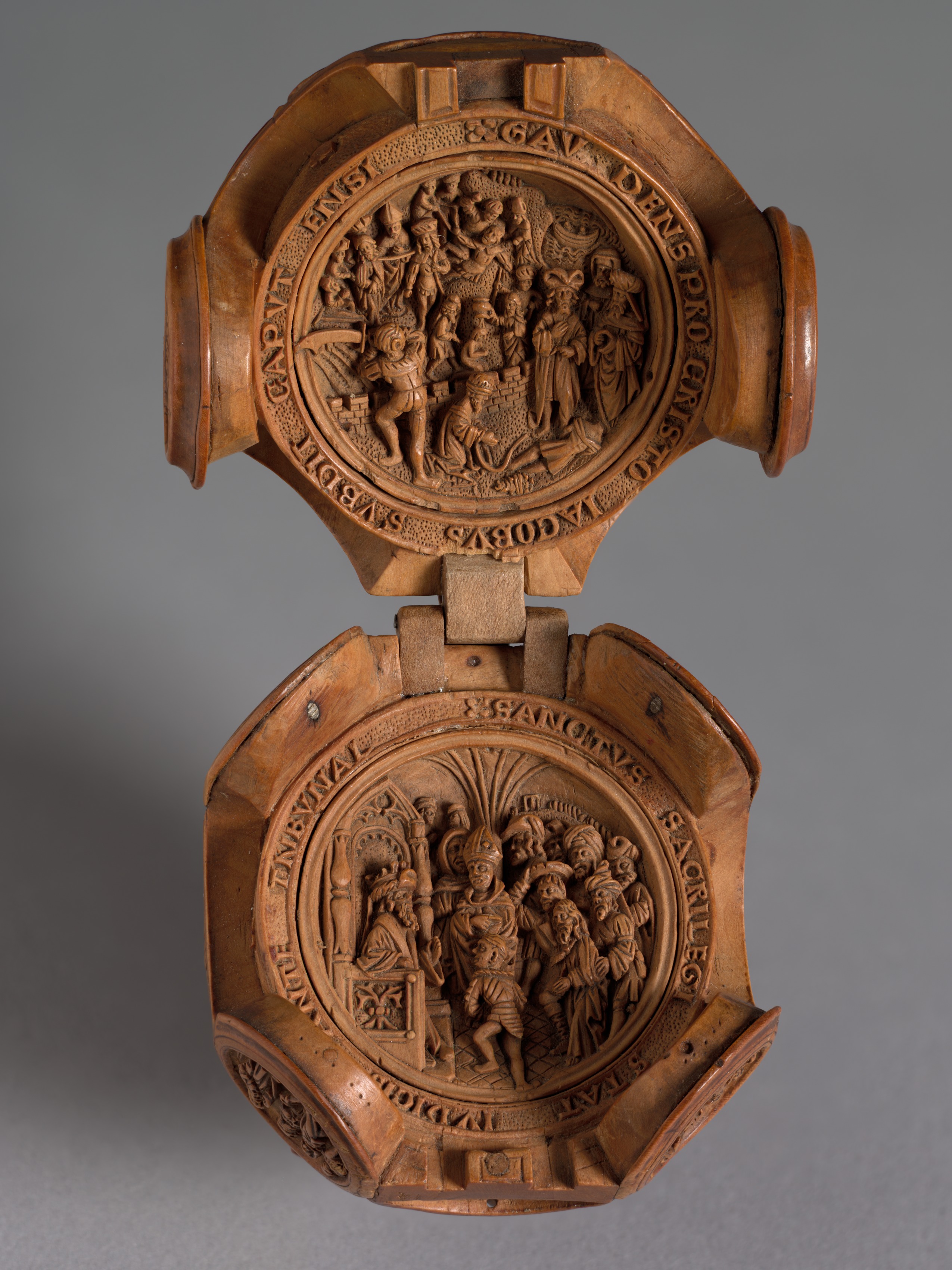The Cleveland Museum of Art
Collection Online as of April 24, 2024

Prayer Nut with Scenes from the Life of St. James the Greater
c. 1500–1530
Location: 112 Northern Renaissance
Did You Know?
This miniature masterpiece was held and caressed within the palm of the holder as they prayed and meditated on their faith. What do you use to focus or engage in quiet concentration?Description
Prayer nuts or "paternosters" are generally made from boxwood and carved with extreme refinement and delicacy with openwork Gothic tracery. They came into fashion as private devotional accessories in the Netherlands in about 1500 to 1530. About 50 prayer nuts are still known to survive.- Scholten, Frits, ed., Small Wonders: Late-Gothic Boxwood Micro-Carvings from the Low Countries. Amsterdam: Rijksmuseum Publications Department, 2016. Reproduced: p. [29] fig. 16; pp. [230-231], cat. 34; Mentioned: p 28, 617, 636
- Small Wonders: Gothic Boxwood Miniatures. Art Gallery of Ontario, Ontario M5T 1G4, Canada (organizer) (November 5, 2016-January 22, 2017); The Metropolitan Museum of Art, New York, NY (February 15-May 15, 2017).Year in Review (1961). The Cleveland Museum of Art, Cleveland, OH (organizer) (November 1-26, 1961).
- {{cite web|title=Prayer Nut with Scenes from the Life of St. James the Greater|url=false|author=Adam Dircksz, Workshop|year=c. 1500–1530|access-date=24 April 2024|publisher=Cleveland Museum of Art}}
Source URL:
https://www.clevelandart.org/art/1961.87